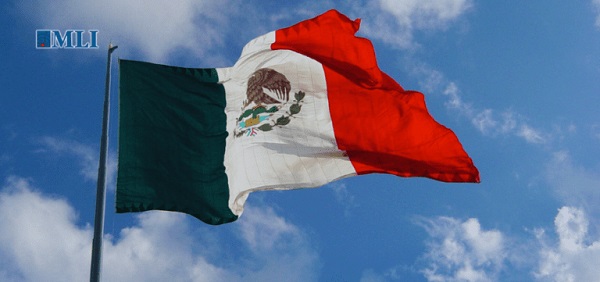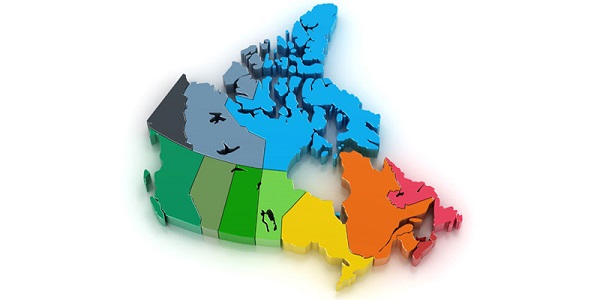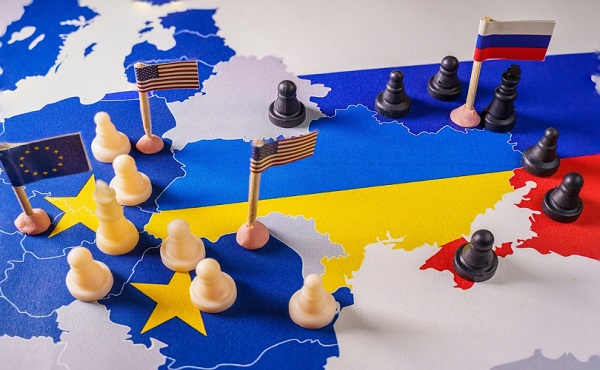Economy
Refuting the ancient myth of overpopulation

From LifeSiteNews
By Aidan Grogan
Recent findings decimate the Malthusian outlook and render advocacy of population control not only ill-informed and inexcusable, but frankly anti-human.
(American Institute for Economic Research) — Prince Philip once said, “In the event that I am reincarnated, I would like to return as a deadly virus, to contribute something to solving overpopulation.” The late Duke of Edinburgh passed away in 2021, but the hysterical sentiment he expressed about overpopulation lives on.
A YouGov poll found that overpopulation concerns are widespread among adults across the planet, with nearly half of sampled Americans believing that the world’s population is too high. This view is shared by 76 percent of Hungarians and 69 percent of Indians, according to the poll.
Overpopulation and ecological disasters have been the themes of numerous blockbuster movies, including ZPD (1972), Soylent Green (1973), Idiocracy (2006), and Elysium (2013). Mainstream news outlets have repeatedly promoted the apocalyptic idea to the public, with headlines such as “Science proves kids are bad for Earth. Morality suggests we stop having them” (NBC News). The progressive magazine Fast Company released a video titled “Why having kids is the worst thing you can do for the planet.”
The theory of overpopulation, and the collectivist idea that human reproduction must be limited, even by force, is nothing new. It first appeared in the ancient Mesopotamian Atrahasis epic, where the gods control the human population by infertility, infanticide, and appointing a priest class to limit childbirth.
Plato and Aristotle both endorsed a form of proto-eugenics and population control. In The Republic, Socrates and Glaucon conclude that an owner controlling the breeding of his dogs and birds to prevent their degeneration should also apply to the human species. The guardians would be tasked with deciding who is allowed to reproduce and who should be prohibited from having offspring. In the Politics, Aristotle advocated for state-mandated abortions of children with deformities or in cases where couples are having too many children and contributing to overpopulation.
The decline of Greek civilization in the second century BCE was not a consequence of an excess number of births, but precisely the opposite. Polybius attributed the downfall of Greece in his time to a decay of population which emptied out the cities and resulted in a failure of productiveness. It was not warfare and pestilence which reduced the birth rate, but decadence. The idle men of Greece, according to Polybius, were more interested in money and pleasure than marriage and child-rearing.
Two millennia later, English economist Thomas Malthus resurrected the old Mesopotamian myth with his 1798 An Essay on the Principle of Population. Malthus claimed that population growth increases geometrically while food production increases only arithmetically, which he believed would lead to widespread famine if the rapid propagation of humanity were not obstructed.
He identified two checks, one natural and one human-induced, which could keep population growth limited: preventive checks, such as delayed marriage or sexual abstinence, that stabilize the birth rate and evade the natural calamities of positive checks – famines, pestilences, earthquakes, floods, etc. – which represent nature’s striking back against the pressures of unhindered population growth.
Malthus preferred the former, but if unsuccessful, supported appalling and brutal depopulation measures. He suggested policies to “make the streets narrower, crowd more people into the houses, and court the return of the plague.” He also recommended banning “specific remedies for ravaging diseases.”
In 1859, Charles Darwin’s On the Origin of Species argued that species evolved gradually from a common ancestor. His follow-up The Descent of Man posited that humans descended from their ape-like past through a process of sexual selection that favored the stronger, more intelligent genes. Darwin said that his evolutionary theory “is the doctrine of Malthus applied with manifold force to the whole animal and vegetable kingdoms.”
READ: U.S. birth rate hit record low last year, signaling surge in childlessness
Darwin’s cousin, Francis Galton, used Darwin’s theory of evolution to develop eugenics – a pseudo-scientific theory that the human race could be improved through controlled breeding.
Subsidized by some of the largest philanthropic organizations in the United States, including the Rockefeller Foundation and the Carnegie Institution, eugenics was embraced by many leaders of the American progressive movement, who favored involuntary sterilization and immigration restriction.
Margaret Sanger, the founder of the American Birth Control League – later to be renamed Planned Parenthood – denigrated charity and referred to the poor as “human waste.” She and her companions considered several names for their movement, such as “neo-Malthusianism,” “population control,” and “race control,” before finally settling on “birth control.”
The eugenicists’ fervent collectivism and disregard for America’s founding principles affirming the inherent dignity and rights of every individual were best expressed through Madison Grant’s The Passing of the Great Race, in which he wrote:
Mistaken regard for what are believed to be divine laws and a sentimental belief in the sanctity of human life tend to prevent both the elimination of defective infants and the sterilization of such adults as are themselves of no value to the community. The laws of nature require the obliteration of the unfit and human life is valuable only when it is of use to the community or race.
Eugenics laws were implemented across the United States beginning with Indiana in 1907. By the Second World War, around 60,000 Americans had undergone sterilization.
In Britain, eugenics was enthusiastically championed by socialists such as John Maynard Keynes, George Bernard Shaw, and H.G. Wells. Keynes wrote an outline for a book called Prolegomena to a New Socialism, in which he listed “eugenics, population” as “chief preoccupations of the state.”
Eugenics – at least under that official title – began to fade after the harsh realities of the Holocaust were unveiled, but the Malthusian presuppositions which undergirded their movement never vanished.
Stanford biologist Paul R. Ehrlich’s 1968 book The Population Bomb re-invigorated the Malthusian craze for a new generation, predicting imminent worldwide famines and other catastrophes due to overpopulation. In the prologue, he wrote: “We can no longer afford merely to treat the symptom of the cancer of population growth; the cancer itself must be cut out. Population control is the only answer.”
That same year, a group of European scientists concerned about the future of the planet founded an NGO called the Club of Rome. Their first major publication, Limits to Growth (1972), attacked the pursuit of material gain and continuous economic expansion. Two of the Club of Rome’s most prominent members openly declared in their 1991 book The First Global Revolution that humanity is the real enemy:
In searching for a common enemy against whom we can unite, we came up with the idea that pollution, the threat of global warming, water shortages, famine and the like, would fit the bill… All these dangers are caused by human intervention in natural processes, and it is only through changed attitudes and behaviour that they can be overcome. The real enemy then is humanity itself.
At the time of the publication of Ehrlich’s doomsday book and the Club of Rome’s founding, the world’s population stood at 3.6 billion, and nearly half of people worldwide were living in poverty. Over the next five decades, the global population more than doubled to 7.7 billion, yet fewer than 9 percent of people remain in poverty today, and famines have virtually disappeared.
Ehrlich’s hypothesis was rejected by economist Julian Simon in his 1981 book The Ultimate Resource, in which he argued that a rising number of “skilled, spirited, and hopeful people” results in more ingenuity, less scarcity, and lower costs in the long run. In other words, the larger the human population, the greater the collective brain power our species may wield to innovate, overcome problems, and benefit everyone through increased abundance. The ultimate resource, according to Simon, is people.
Recent research from Gale L. Pooley and Marian L. Tupy has vindicated Simon’s optimistic view. For every one-percent increase in population, commodity prices tend to fall by around one percent. In the years 1980-2017, the planet’s resources became 380 percent more abundant.
These findings decimate the Malthusian outlook and render advocacy of population control not only ill-informed and inexcusable, but frankly anti-human. The ecological cataclysms predicted by Ehrlich and the Club of Rome haven’t come true. Nature hasn’t struck back against a rapidly increasing population in any manner anticipated by Malthus.
As former U.S. Department of Energy undersecretary for science Steven E. Koonin pointed out in his 2021 book Unsettled, U.N. and U.S. government climate data show the following: 1) humans have had no detectable impact on hurricanes over the past century, 2) Greenland’s ice sheet isn’t shrinking any more rapidly today than it was 80 years ago, and 3) the net economic impact of human-induced climate change will be minimal through at least the end of this century.
Pooley and Tupy, however, caution that population growth alone is not enough to generate what they term “superabundance,” as they titled their recent book. The innovation required to sustain an ever-increasing world population demands economic and personal freedom. Collectivism and central planning will only restrict the human ingenuity, ideas, and enterprises that will pave the way toward a brighter, more prosperous future.
It is certainly time to lay to rest Malthusian theory and the overpopulation hysteria it has aroused. We must avoid the cynical outlook on humanity which regards us as net destroyers, a viral pathogen ravaging the earth, and instead opt for the more positive – and true – vision of human beings and human destiny. We are net creators.
Reprinted with permission from the American Institute for Economic Research.
Crime
Mexican cartels are a direct threat to Canada’s public safety, and the future of North American trade

From the Macdonald Laurier Institute
By Gary J. Hale for Inside Policy
RCMP raided a fentanyl ‘superlab’ in Falkland, BC, with ties to a transnational criminal network that spans from Mexico to China.
On October 31, residents of Falkland, BC, were readying their children for a night of Halloween fun. Little did they know that their “quaint, quiet, and low-key little village” was about to make national headlines for all the wrong reasons.
On that day, RCMP announced that it had raided a fentanyl “superlab” of scary proportions near Falkland – one that police called the “largest and most sophisticated” drug operation in Canada. Officers seized nearly half-a-billion-dollars’ worth of illicit materials, including 54 kilograms of finished fentanyl, 390 kilograms of methamphetamine, 35 kilograms of cocaine, 15 kilograms of MDMA, and six kilograms of cannabis” as well as AR-15-style guns, silencers, small explosive devices, body armour, and vast amounts of ammunition.
They also found massive quantities of “precursor chemicals” used to make the drugs. This strongly suggests that the superlab was tied into a transnational criminal network that spans from Mexico to China – one that uses North America’s transportation supply chains to spread its poisonous cargo across Canada and the United States.
The Canada-US-Mexico relationship is comprised of many interests, but the economic benefits of trade between the nations is one of the driving forces that keep these neighbours profitably engaged. The CUSMA trade agreement is the successor to NAFTA and is the strongest example globally of a successful economic co-operation treaty. It benefits all three signatories. This level of interdependence under CUSMA requires all parties to recognize their respective vulnerabilities and attempt to mitigate any threats, risks, or dangers to trade and to the overall relationship. What happens to one affects all the others.
The supply chain, and the transport infrastructure that supports it, affects the balance books of all three. While the supply chain is robust and currently experiences only occasional delays, the different types of transport that make up the supply chain – such as trucks, trains, and sea-going vessels – are extremely vulnerable to disruption or stoppages because of the unchecked violence and crime attributed to the activities of Mexican Transnational Criminal Organizations (TCOs). These cartels operate throughout Mexico, from the Pacific ports to the northern plains at the US-Mexico border.
The sophistication of the Falkland superlab strongly suggests connectivity to multi-national production, transportation, and distribution networks that likely include China (supply of raw products) and Mexico (clandestine laboratory expertise).
For most Canadians, Mexican cartels call to mind the stereotypical villains of TV and movie police dramas. But their power and influence is very real – as is the threat they pose to all three CUSMA nations.
Mexico’s cartels: a deadly and growing threat
Mexican cartels started as drug trafficking organizations (DTOs) in the 1960s. By the late 1990s they had evolved to become transnational enterprises as they expanded their business beyond locally produced drugs (originally marijuana and heroin) to include primarily Colombian cocaine that they transported through Mexico en route to the US and Canada.
Marijuana and the opium poppy are cultivated in Mexico and, in the case of weed, taken to market in raw form. While the cartels required some chemicals sourced from outside Mexico to extract opium from the poppy and convert it into heroin, the large-scale, multi-ton production of synthetic drugs like Methamphetamine and today Fentanyl expanded the demand for sources of precursor chemicals (where the chemical is slightly altered at the molecular level to become the drug) and essential chemicals (chemicals used to extract, process, or clean the drugs.)
The need to acquire cocaine and chemicals internationalized the cartels. Mexican TCO’s now operate on every continent. That presence involves all the critical stages of the criminal business cycle: production, transportation, distribution, and re-capitalization. Some of the money from drug proceeds flow south from Canada and the US back to Mexico to be retained as profits, while other funds are used to keep the enterprise well-funded and operational.
In Mexico, the scope of their activities is economy-wide; they now operate many lines of criminal business. Some directly affect Mexico’s economic security, such as petroleum theft, intellectual property theft (mainly pirated DVDs and CDs), adulterating drinking alcohol, and exploiting public utilities. Others are in “traditional” criminal markets, such as prostitution, extortion, kidnapping, weapons smuggling, migrant smuggling and human trafficking. Organized auto theft has also become another revenue stream.
Criminal Actors
The Cartel de Sinaloa (CDS or Sinaloa Cartel) and the Cartel Jalisco Nueva Generacion (CJNG) are the two principal TCO’s vying for territorial control of Mexico’s air, land, and maritime ports, as well as illegal crossing points. These points on the cartel map are known as “plazas,” and are often between formal ports of entry into the US. By controlling territories crucial for the inbound and outbound movement of drugs, precursors, people, and illegal proceeds, the cartels secretly transport illicit goods and people through commercial supply chains, thus subjecting the transportation segment of legitimate North American trade to the most risk.
That is giving the cartels the power to impair – and even control – the movement of Mexico’s legitimate trade. While largely kept out of the public domain, incidents of forced payment of criminal taxation fees, called “cuotas,” and other similar threats to international business operations are already occurring. For instance, cuotas are being imposed on the transnational business of exporting used cars from the US to Mexico. They’re also being forced on Mexican avocado and lime exporters before the cartels will allow their products to cross the border to the US and international markets. This has crippled that particular trade. Unfortunately, the Mexican government has been slow to react, and the extortion persists throughout Mexico. It is worth repeating – these entirely legitimate goods reach the market only after cartel conditions are met and bribes paid.
The free trade and soft border policies of the US of recent years have allowed cartel operatives to enter that country and work the drug trade with limited consequence. In May, the U.S. Drug Enforcement Administration (DEA) published the National Drug Threat Assessment 2024, where it reported that the Jalisco and Sinaloa cartels operate in all 50 US states and are engaged in armed violence in American cities as they fight for market shares of the sales of Methamphetamine, Fentanyl, and other drugs sourced from Mexico.
The DEA’s findings should sound alarms in Canada. Canada and the US have similar trade and immigration policies, which allow the Mexican cartels to easily enter and control the wholesale component of the drug trade. The long-term effects of the drug trade are the billions of dollars gained that allow for the corruption of government officials. Canada should be on guard: Mexican drug cartels in Canada could begin to not only kill ordinary Canadians by knowingly selling them deadly drugs like Fentanyl – their operatives can also embed themselves in Canadian society, as they have in the US, leading to ordinary citizens on Canadian streets being victimized by the armed violence cartels regularly use to assert their position and power.
Organized crime and Mexican governance
Canada faces these threats directly, but the indirect ones that the cartels present to Mexican governance are no less consequential to Canada in the long term – and likely sooner. Illicit agreements between corrupt Mexican government officials and the cartels assure that the crime organizations retain control of territory and have freedom to operate.
That threat is becoming increasingly existential. Cartel fighters are well disciplined, well equipped and strong enough to challenge Mexico’s military, currently the government’s main tool to fight them. Should the TCOs come to dominate Mexican society or gain decisive influence over government policy, Mexico’s government risks being declared a narco-democracy and the US may come to see the cartels as a threat to national security. That in turn could lead to a US military intervention in Mexico – not an outcome desired by either side.
While that scenario may be considered extreme, it is not as far from reality as many may think. While in many respects the US-Mexico trading relationship remains unchanged, the overall political context has become testy – and could be a real flashpoint for the incoming Trump administration.
Political developments in Mexico have played a role. After his election in 2018, former Mexican President Andrés Manuel López Obrador (commonly referred to his initials, AMLO) demonstrated a disdain for all things North American. This included frequent complaints of US interference or violation of Mexican sovereignty – complaints that were more about keeping Mexican government domestic actions out of the public eye. To retain a shroud of secrecy over government corruption, Mexico under Amlo started in 2022 to limit the activities and numbers of US federal law enforcement agencies operating there, particularly the FBI, DEA, ATF and ICE. These agencies formerly enjoyed a close relationship with the Mexican Federal Police – a force AMLO disbanded and replaced with the National Guard. The AMLO administration reduced the number of US assets and agents in Mexico, particularly singling out the DEA for the most punitive restrictions.
During his administration, AMLO placed the army and navy in charge of all ports of entry and gave them responsibility for all domestic public safety and security by subordinating the Guardia Nacional (GN), or National Guard, to the army. The GN, the only federal law enforcement agency, has been taken over by military officials who are sometimes corrupt and in league with the cartels.
Mexican President Claudia Sheinbaum, who took office in 2024, has continued AMLO’s organizational moves. Sheinbaum comes from the same political party and has so far extended carte blanche to the military, whose administration is opaque and now operates with impunity, under the guise of “national security” and “sovereignty” concerns.
It is expected that Sheinbaum will continue to shield American eyes from Mexico law enforcement and judicial affairs. The fear in the US law enforcement and national security community is that Sheinbaum may even declare DEA non grata, much as then Venezuelan President Hugo Chavez in 2005 and Bolivian President Evo Morales in 2008 did in their countries. Both were anti-American leftists of the same mindset as AMLO and Sheinbaum, who feared detection of their connections to the illegal drug trade.
Sheinbaum has publicly demonstrated disinterest in the consistent application of the rule of law against the TCOs by stating that she will continue the “hugs not bullets” (“abrazos, no balazos”) non-confrontational, non-interventional posture towards organized crime. Agreements with corrupt government officials will allow the cartels to expand their business and to operate with impunity. Through intimidation, bribery, and murder, the cartels affect decision making at the municipal, state, and federal levels of Mexican government. That leverage, while performed outside the public eye, has the potential to negatively affect supply and demand among the three countries at the very least, and at worst, to signal that cartels in Mexico are directly or indirectly involved in the formulation of government security, immigration, drug, and trade policy.
AMLO enacted constitutional changes that will provide Sheinbaum with the powers of a dictator, giving her administration unchecked control of the executive, legislative, and judicial branches of government. As a result, the judiciary in Mexico is in crisis mode with 8 of 11 Supreme Court Justices resigning in October 2024 to protest the unconstitutional disregard for due process that started with AMLO and continues with Sheinbaum thanks to a “voting for judges” law that she and AMLO have rammed into operation without debate. This development portends even more corruption.
Without the existence of an independent judicial system, these institutional changes could give pause to US and Canadian negotiators when it comes time to renew CUSMA in 2026.
Beyond 2025: Mexican organized crime as a threat to the US and Canada, and Greater North American implications
Most worrying, the cartels will be in a yet stronger position to affect and even dictate the pace and volume of legitimate trade between the US and Mexico under Sheinbaum. This makes Mexico the weakest link among the three CUSMA members.
The US and Canada should therefore be concerned about the strength and power of the cartels because the current trajectory could provide them a greater role in Mexico’s performance as a trade partner. Should this trend continue, the US would likely begin to see Mexico through the lens of a threat to critical components of its national security: 1) the public safety of US citizens being killed in epidemic proportions by the drugs produced by citizens of Mexico; 2) the negative impact or increased cost of commerce that supplies goods to the American market; and 3) the CUSMA relationship that sustains the economic strength of all three participating countries.
This worrisome evolution requires proactivity by Canada and the US to insist that Sheinbaum reverse the gains that the cartels have made to influence policy and erode the government’s monopoly on territorial control and the use of violence, and reverse Mexico’s limits on drug enforcement co-operation with what should be its partners to the north. Pressure should also be applied to demand a return to a drug policy model that includes international law enforcement co-operation and a continuation towards the transformation of the Mexican judicial system from a mixed inquisitorial or accusatorial system to an adversarial system that employs the use of juries, witness testimony, oral hearings and trials, and cross-examination of witnesses, as opposed to a system where cartel-influenced elections could dictate judicial outcomes.
The implications of the further development of a Mexico narco-democracy for US-Mexico-Canada relations would be devastating. Co-operation on public safety and security would cease completely, allowing the cartels to take full control of commercial supply lines, significantly reducing trade between the three nations – likely causing the CUSMA trade deal to fracture until governance returned to duly elected civilian officials.
Continental security and Canada’s contribution
The continued success of CUSMA lies with Mexico more than any other country. Should Mexico continue on its path to autocracy, it could upset the trade deal, crucial to the prosperity of all three countries. Canada is not immune from what on the surface may appear to be mostly bilateral, US-Mexico issues, because, regardless of the commodity – whether it’s consumables or manufactured items – the cartels are positioned and empowered to affect imports, exports, trade, and migration throughout North America.
For the foreseeable future, Mexico is not going to voluntarily change its security posture. This enables the cartels to remain persistent threats, especially to trade. Canada and the US need to continue to jointly insist that Mexico take a stronger stance against organized crime and that it take steps to strengthen the judiciary and the rule of law in that country.
Gary J. Hale served 31 years in the Drug Enforcement Administration (DEA), retiring as an executive-level intelligence analyst. In 2010, he was appointed as Drug Policy fellow and Mexico Studies Scholar at the James A. Baker III Institute for Public Policy at Rice University in Houston, Texas.
Business
Broken ‘equalization’ program bad for all provinces

From the Fraser Institute
By Alex Whalen and Tegan Hill
Back in the summer at a meeting in Halifax, several provincial premiers discussed a lawsuit meant to force the federal government to make changes to Canada’s equalization program. The suit—filed by Newfoundland and Labrador and backed by British Columbia, Saskatchewan and Alberta—effectively argues that the current formula isn’t fair. But while the question of “fairness” can be subjective, its clear the equalization program is broken.
In theory, the program equalizes the ability of provinces to deliver reasonably comparable services at a reasonably comparable level of taxation. Any province’s ability to pay is based on its “fiscal capacity”—that is, its ability to raise revenue.
This year, equalization payments will total a projected $25.3 billion with all provinces except B.C., Alberta and Saskatchewan to receive some money. Whether due to higher incomes, higher employment or other factors, these three provinces have a greater ability to collect government revenue so they will not receive equalization.
However, contrary to the intent of the program, as recently as 2021, equalization program costs increased despite a decline in the fiscal capacity of oil-producing provinces such as Alberta, Saskatchewan, and Newfoundland and Labrador. In other words, the fiscal capacity gap among provinces was shrinking, yet recipient provinces still received a larger equalization payment.
Why? Because a “fixed-growth rule,” introduced by the Harper government in 2009, ensures that payments grow roughly in line with the economy—even if the gap between richer and poorer provinces shrinks. The result? Total equalization payments (before adjusting for inflation) increased by 19 per cent between 2015/16 and 2020/21 despite the gap in fiscal capacities between provinces shrinking during this time.
Moreover, the structure of the equalization program is also causing problems, even for recipient provinces, because it generates strong disincentives to natural resource development and the resulting economic growth because the program “claws back” equalization dollars when provinces raise revenue from natural resource development. Despite some changes to reduce this problem, one study estimated that a recipient province wishing to increase its natural resource revenues by a modest 10 per cent could face up to a 97 per cent claw back in equalization payments.
Put simply, provinces that generally do not receive equalization such as Alberta, B.C. and Saskatchewan have been punished for developing their resources, whereas recipient provinces such as Quebec and in the Maritimes have been rewarded for not developing theirs.
Finally, the current program design also encourages recipient provinces to maintain high personal and business income tax rates. While higher tax rates can reduce the incentive to work, invest and be productive, they also raise the national standard average tax rate, which is used in the equalization allocation formula. Therefore, provinces are incentivized to maintain high and economically damaging tax rates to maximize equalization payments.
Unless premiers push for reforms that will improve economic incentives and contain program costs, all provinces—recipient and non-recipient—will suffer the consequences.
Authors:
-

 ESG2 days ago
ESG2 days agoCan’t afford Rent? Groceries for your kids? Trudeau says suck it up and pay the tax!
-

 John Stossel2 days ago
John Stossel2 days agoGreen Energy Needs Minerals, Yet America Blocks New Mines
-

 Daily Caller2 days ago
Daily Caller2 days agoLos Angeles Passes ‘Sanctuary City’ Ordinance In Wake Of Trump’s Deportation Plan
-

 Alberta2 days ago
Alberta2 days agoProvince considering new Red Deer River reservoir east of Red Deer
-

 Addictions2 days ago
Addictions2 days agoBC Addictions Expert Questions Ties Between Safer Supply Advocates and For-Profit Companies
-

 Aristotle Foundation2 days ago
Aristotle Foundation2 days agoToronto cancels history, again: The irony and injustice of renaming Yonge-Dundas Square to Sankofa Square
-

 Business22 hours ago
Business22 hours agoCBC’s business model is trapped in a very dark place
-

 conflict1 day ago
conflict1 day agoUS and UK authorize missile strikes into Russia, but are we really in danger of World War III?






